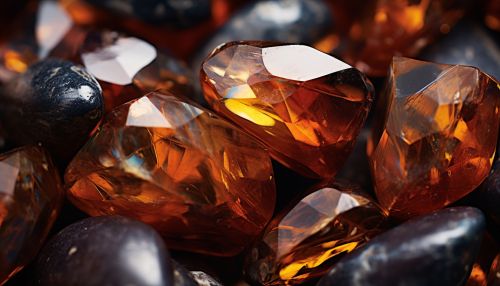Gallstones
Overview
Gallstones are hardened deposits that form in the bile within the gallbladder. They can range in size from as small as a grain of sand to as large as a golf ball. Some people develop just one gallstone, while others develop many gallstones at the same time.
Types of Gallstones
There are two main types of gallstones: cholesterol stones and pigment stones.
Cholesterol Stones
Cholesterol stones make up about 80 percent of all gallstones. They are usually yellow in color and are primarily made of hardened cholesterol. They form when there is too much cholesterol in the bile for it to remain as a liquid, so it solidifies.
Pigment Stones
Pigment stones make up the other 20 percent of gallstones. They are dark in color and are made of bilirubin, which is a byproduct of red blood cells broken down by the liver. Pigment stones can be black or brown.
Causes
Gallstones are caused by an imbalance in the substances that make up bile. In the case of cholesterol stones, the bile contains too much cholesterol. For pigment stones, the bile has too much bilirubin.
Risk Factors
Certain factors increase the risk of developing gallstones, including:
- Being female
- Being aged 40 or older
- Having a family history of gallstones
- Being overweight or obese
- Eating a high-fat or high-cholesterol diet
- Having diabetes
- Losing weight very quickly
- Taking medications that contain estrogen, such as oral contraceptives or hormone therapy drugs
- Having certain blood disorders, such as sickle cell anemia or leukemia
Symptoms
Many people with gallstones do not experience symptoms. These are known as "silent" gallstones and do not typically require treatment. However, if a gallstone becomes lodged in a duct and causes a blockage, symptoms can occur. These may include:
- Sudden and rapidly intensifying pain in the upper right portion of your abdomen
- Sudden and rapidly intensifying pain in the center of your abdomen, just below your breastbone
- Back pain between your shoulder blades
- Pain in your right shoulder
- Nausea or vomiting
Diagnosis
Gallstones are often discovered during tests for other health conditions. However, if your doctor suspects you have gallstones, they may perform the following tests:
- Ultrasound: This is the most common method used to detect gallstones.
- CT scan: This imaging test can show gallstones in your gallbladder.
- MRI: An MRI can show bile ducts blocked by gallstones.
- ERCP: During this procedure, a flexible tube is inserted down your throat and into your small intestine. A dye is injected and X-rays are taken to view the bile ducts.
Treatment
Treatment for gallstones depends on whether you are experiencing symptoms. Silent gallstones usually do not require treatment. However, if you are experiencing symptoms, treatment options include:
- Cholecystectomy, or gallbladder removal. This is the most common treatment for symptomatic gallstones. Following gallbladder removal, bile flows directly from the liver into the small intestine, rather than being stored in the gallbladder.
- Medications to dissolve gallstones. Medications made from bile acid are designed to dissolve gallstones. They can be effective, but they can take months or years to work and the stones can return once treatment is stopped.
Prevention
While it is not always possible to prevent gallstones, you can reduce your risk by:
- Maintaining a healthy weight: Aim to stay at a healthy weight and avoid rapid weight loss.
- Eating a balanced diet: Try to include a variety of foods in your diet and limit your intake of high-cholesterol foods.
- Exercising regularly: Regular physical activity can help maintain a healthy weight and lower cholesterol levels.


